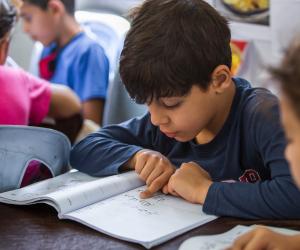
Parental Behavior in the Early Years - Phase Two
This report details Phase 2 of a study by the Queen Rania Foundation (QRF) focused on understanding and influencing parental behavior in Jordan to enhance early childhood development.
The primary objective was to identify effective messaging strategies that resonate with parents of children aged 0-5, aiming to create a literacy-rich home learning environment.
The research involved several stages: scoping, qualitative developmental research (interviews), message development, qualitative testing research (focus groups and interviews), and reporting.
The study aimed to identify behaviors parents could adopt to support their children's development, explore how to motivate parents to engage in these behaviors, and determine which benefits and messaging approaches would be most effective.
Key findings revealed that while parents universally value education and love their children, many are unaware of the specific behaviors that support early childhood development, particularly reading with young children.
Factors such as cultural norms, perceived costs (time, child’s reaction), lack of efficacy (knowledge, skills, confidence), and access to age-appropriate materials hindered engagement.
The study identified 12 segments based on parents' gender and their child's age, and noted that parents are at different stages of behavioral change: pre-contemplation, contemplation, action, and maintenance. Effective messaging needed to raise awareness of benefits, promote benefits to outweigh costs, increase efficacy by providing knowledge and tools, demonstrate social approval, and integrate activities into existing routines.
The recommended message strategy focused on showing relatable parents engaging in age-appropriate behaviors, emphasizing both rational and emotional benefits, making behaviors seem easy and achievable, demonstrating social approval from family, and showing how behaviors become daily habits. Visuals, voice-overs/text, and taglines were designed to reinforce these elements.
The report concludes with recommendations, including targeting mothers as the primary audience, focusing on non-reading behaviors initially, tailoring messages to specific segments, addressing barriers to adoption (lack of materials, time, etc.), and conducting further research to refine and monitor the impact of the communications.
Project Objectives
Building on existing evidence and primary research, this study’s findings will inform the development of:
• A behaviour change campaign to create a literacy-rich home learning environment by drafting messages and testing them to see what resonates with parents of children under 6 years old.
• Guidelines for drafting similar messaging for any campaign, e.g., “parents from demographic group x that exhibit x motivators/barriers should be targeted by science-based messaging that uses Modern Standard Arabic,” and provide further information about how these messages should be drafted.
The overall objective of the research is to identify the language and messaging styles that resonate with parents who have specific needs and backgrounds across Jordan. The research will help identify the most effective messaging approaches for future programming to drive behaviour change among parents in Jordan. The findings will be used by QRF and other national stakeholders in Jordan to determine messaging styles that will most effectively engage parents from different demographic and psychographic backgrounds and encourage a shift in their behaviour across key interventions being implemented.
- Parents value education and love their children, but many are unaware of specific behaviors that support early childhood development, particularly reading with young children.
- Factors hindering engagement include:cultural norms, perceived costs (time, child’s reaction), lack of efficacy (knowledge, skills, confidence), and limited access to age-appropriate materials.
- Twelve segments of parents were identified based on gender and child's age.
- Parents are at different stages of behavioral change: pre-contemplation (not aware), contemplation (aware but not doing), action (trying), and maintenance (regularly doing).
- Effective messaging needs to: raise awareness of benefits, ensure benefits outweigh costs, increase efficacy by providing knowledge and tools, demonstrate social approval, and integrate activities into existing routines.
- A message strategy was developedfocused on showing relatable parents engaging in age-appropriate behaviors, emphasizing rational and emotional benefits, making behaviors seem achievable, demonstrating social approval, and showing how behaviors become habits.
- Visuals, voice-overs/text, and taglineswere designed to reinforce these elements.
- The communications were more effective at encouraging mothers to do most behaviors other than reading e-books and less effective at encouraging parents of younger children to read or fathers to adopt any of the behaviors.
- Parents believe children under three do not understand stories/what is being said and so will not benefit.
- Fathers believe the behaviors are the responsibility of mothers and/or older siblings who spend more time with the child.

